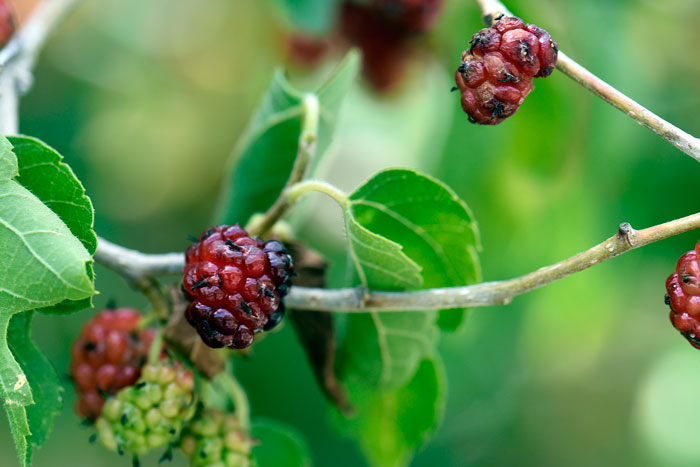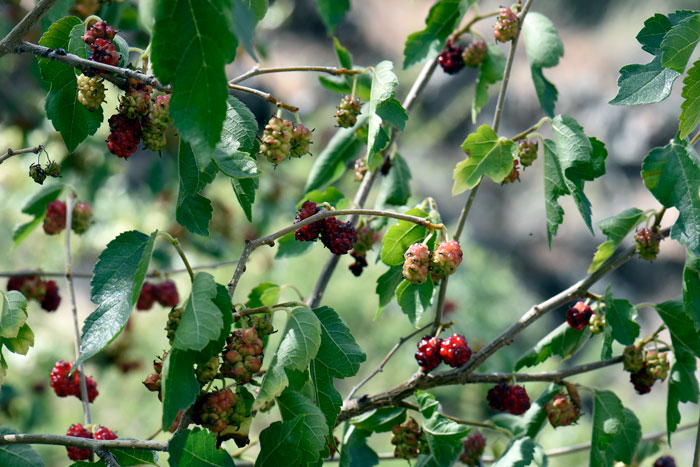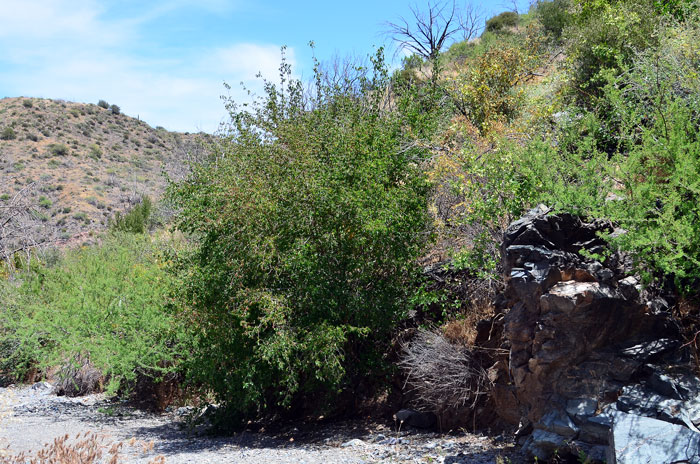Morus microphylla, Texas Mulberry




Scientific Name: Morus microphylla
Common Name: Texas Mulberry
Also Called: Littleleaf Mulberry, Mountain Mulberry, Texas Mulberry (Spanish: Mora)
Family: Moraceae, Mulberry or Fig Family
Synonyms: (Morus confinis, Morus crataegifolia, Morus grisea, Morus radulina)
Status: Native
Duration: Perennial
Size: Usually to 15 feet or more (24 feet).
Growth Form: Shrub or small tree; light gray fissured bark with greenish branchlets, light pubescence.
Leaves: Green; highly variable in shape, stipules present, petioles small, about 1⁄3 inch long, leaves with 3 or more lobes, margins crenulate-serrate, leaf underside (abaxial) scabrid or pubescent, lighter than the top surface (adaxial).
Flower Color: Greenish to reddish; inconspicuous, drooping clusters of catkins, staminate and pistillate, fruit berry-like, edible, red to black when mature.
Flowering Season: Spring, March to April in Texas.
Elevation: 3,500 to 5,000 feet, 500 to 6,500 feet in California.
Habitat Preferences: Along streams, canyons and limestone slopes.
Recorded Range: Texas Mulberry is relatively rare in the United States where it grows in AZ, NM, OK. and TX. In Arizona it is found in the northern, central and southern parts of the state.
North America & US County Distribution Map for Morus microphylla.
U.S. Weed Information: No information available.
Invasive/Noxious Weed Information: No information available.
Wetland Indicator: In North America Morus microphylla has the following wetland designations; Arid West, FACU; Great Plains, UPL; Western Mountains, Valleys, and Coast, FACU.
- FACU = Facultative Upland, usually occur in non-wetlands, but may occur in wetlands, UPL = Obligate Upland, almost never occur in wetlands.
Threatened/Endangered Information: No information available.
Genus Information: The Plant List is reviewing the genus Morus. The most recent information lists 17 species for this genus.
The USDA Plants.gov website identifies 15 genera in North America for the Mulberry family and 4 species for Morus.
The USDA Plants.gov also reports that Arizona and New Mexico each have 2 species in Morus, California has 1 species and Texas has 4 species.
Comments: The genus Morus is placed in the Mulberry or Fig Family and includes the world-wide genus Ficus with over 840 species.
Texas Mulberry is used in for culinary purposes; (Apache, Chiricahua & Mescalero for bread & cakes where the fruit is pressed into pulpy cakes, dried and stored, and by the Apache & Mescalero also as food for sauces and relishes. See ethno-botanical uses at Native American Ethnobotany, University of Michigan, Dearborn.

